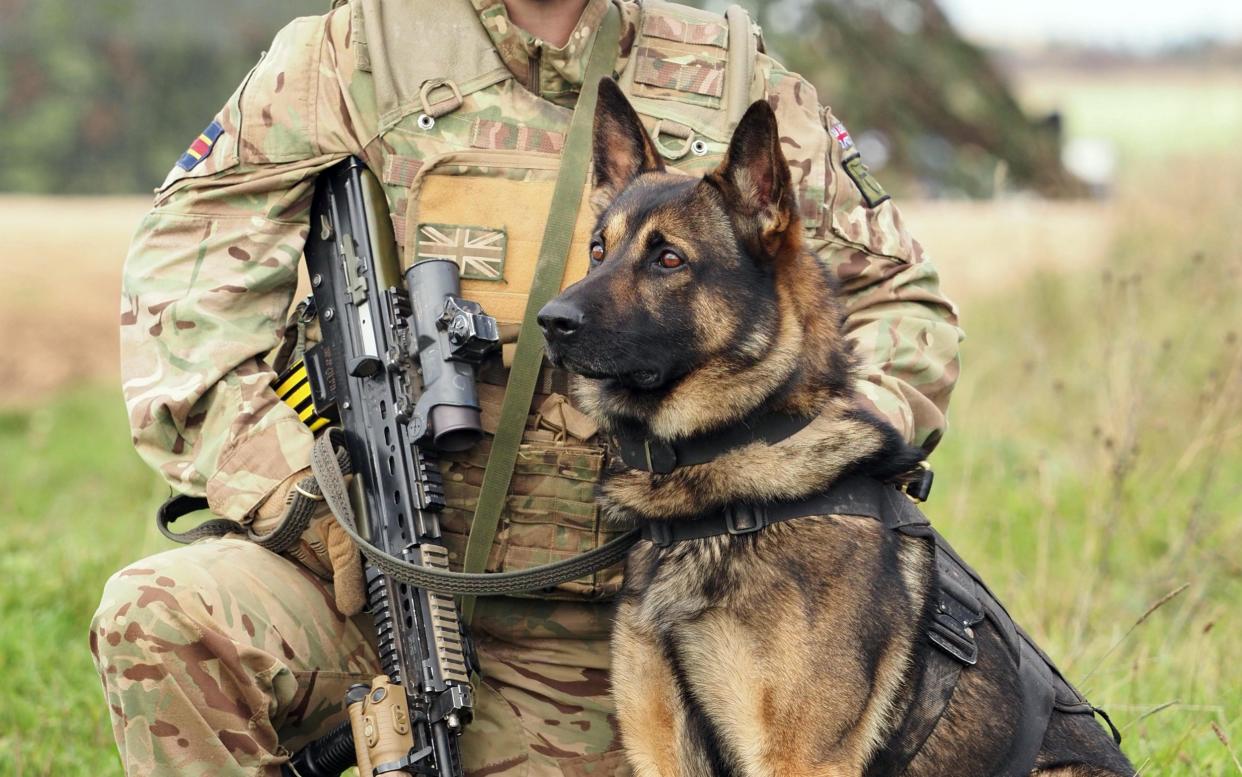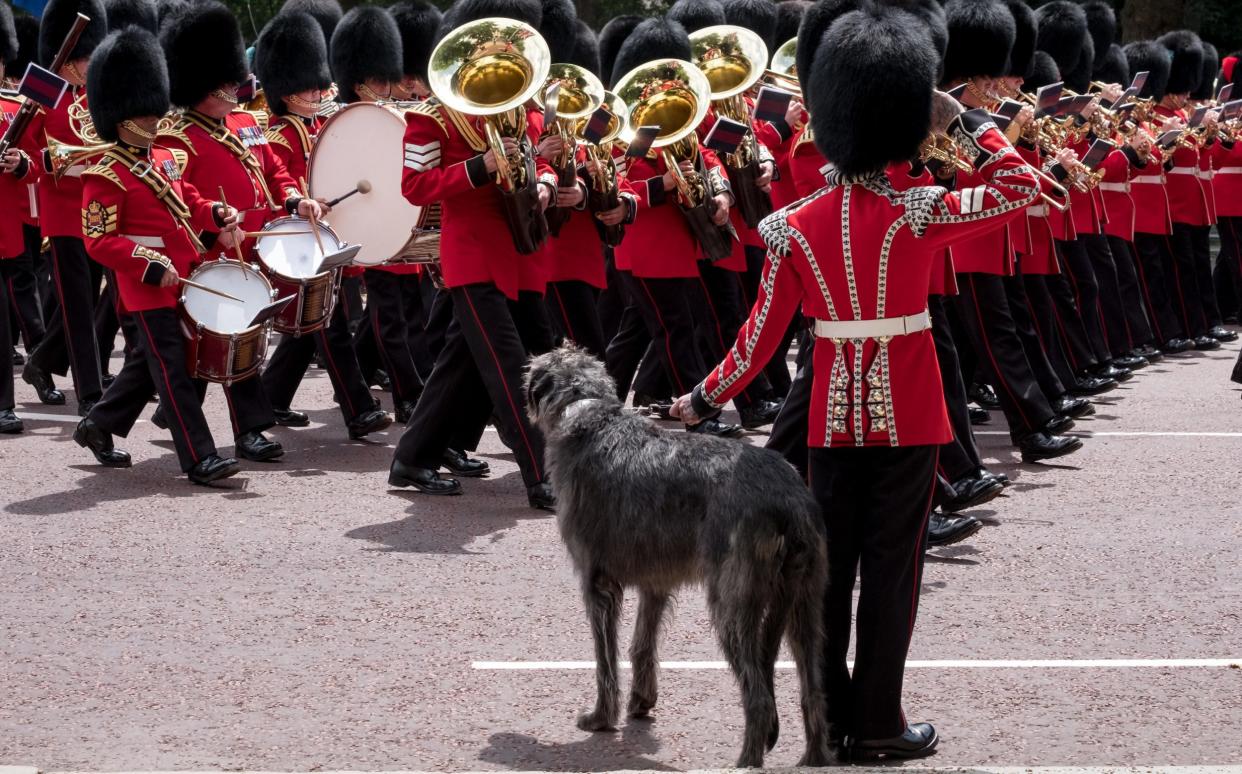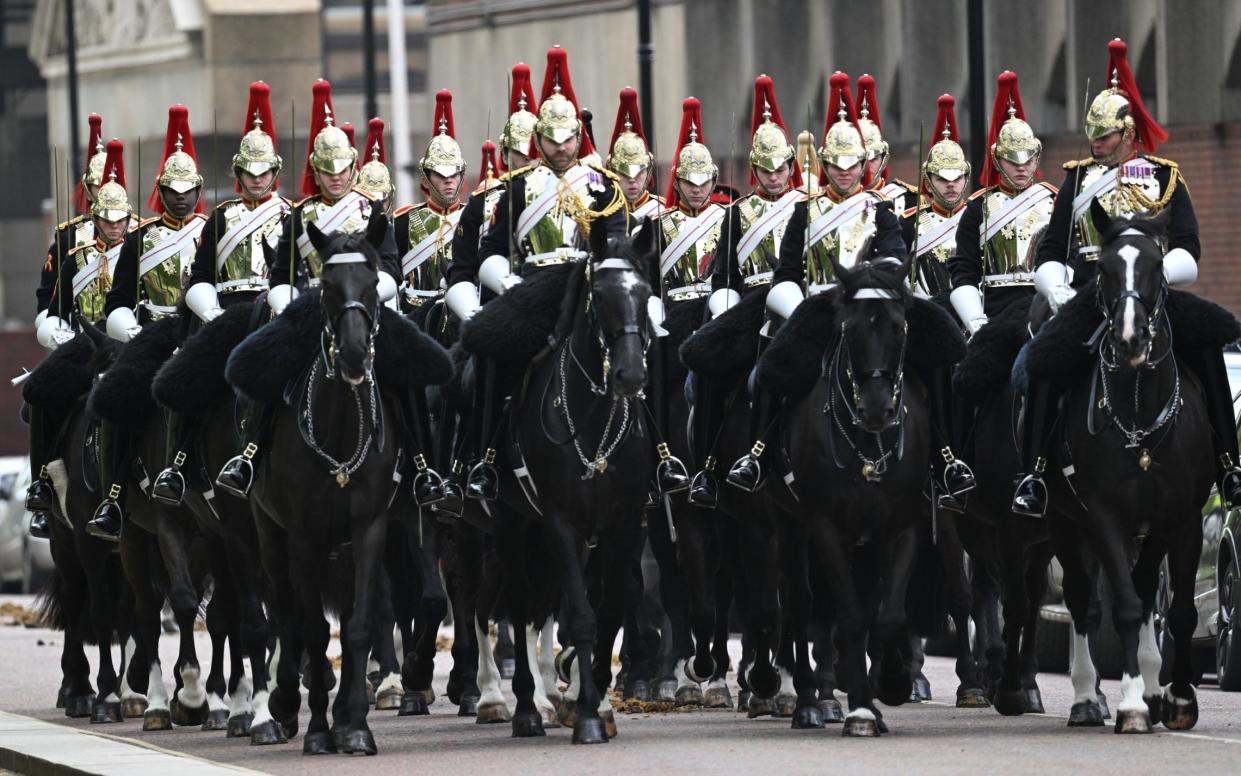Hundreds of dogs and horses put down by Armed Forces’ vets after serving in war zones

Almost 1,300 British military dogs have been destroyed by Army vets after serving in war zones around the world, The Telegraph can reveal.
The dogs responsible for protecting troops against attacks by insurgents as well as sniffing out buried bobby traps were put down after falling ill or because they were regarded as being too fierce to rehome.
Some fit dogs were euthanised for “failing to maintain standards” and “welfare reasons”, while others were destroyed after being described as “old and worn out”. In 2020 six dogs were put down for being an “unacceptable risk to safety”.
Military vets also euthanised 309 horses after they became ill or lame, although some were also destroyed because they had become too dangerous to handle.
Horses are used by the Household Cavalry Mounted Regiment and the King’s Troop Royal Horse Artillery.
Two military horses that suffered serious injuries after running loose through London now look set to recover from their wounds but the Ministry of Defence has said that it is too early to say whether they will return to duties.
Seven horses and six soldiers from the Household Cavalry were on an extended exercise in Belgravia last Wednesday when the horses were spooked by builders moving rubble.
Four service personnel were thrown from their horses and four of the animals, named Vida, Trojan, Quaker and Tennyson, got loose, smashing into vehicles, including a double-decker bus and causing a number of injuries.
Meanwhile defence sources have said that many of the dogs killed for safety reasons over the last two decades were trained as protection animals and taught to be aggressive when in “working mode”.
One serving dog handler said: “Any dog trained to be aggressive is effectively being given a death sentence because they are almost impossible to rehome.”
The figures from a series of Freedom of Information requests by The Telegraph show that between 2002 and January 2019 up to 1,200 dogs were destroyed and a further 78 dogs were put down between 2019 and 2022.
The figures for the number of dogs destroyed last year have not yet been released by the Ministry of Defence.
Dogs are used by all three of the Armed Forces and have become a key part of special forces operations, being used extensively in Iraq, Afghanistan and Syria.

Both the Special Air Service and the Special Boat Service canine teams use the Belgian Malinois, a highly intelligent and fearless animal which can be trained to be both aggressive and agile.
Dogs have also been used to detect explosives, often buried beneath the ground and were responsible for saving the lives of hundreds of soldiers during the 20-year-long war in Afghanistan.
Four dogs in Afghanistan won the Dickin Medal – the animal version of the Victoria Cross – including a labrador called Sadie, which saved lives by spotting a bomb in 2005. Also honoured were Treo, a labrador which found roadside bombs in 2008, and Theo, a springer spaniel who found 114 bombs and gun caches.
Colonel Phil Ingram, a former Army Intelligence Officer, who employed military dog teams during his career, said: “Military dogs are an essential and integral part of operations and over recent years have saved many lives. However, their behaviour is focused on a military environment making it extremely difficult to rehome them when injured or when they come to the end of their service.
“It is tragic that so many loyal four legged servants have to be put to sleep, but like many veterans they would find the transition out of military service extremely difficult if not impossible in many cases.”

But Elisa Allen, vice president of the animal charity People for the Ethical Treatment of Animals, said: “Animals are not soldiers, nor are they pieces of military equipment to be used and then decommissioned at the end of their enforced service.”
“While every effort must be made to give them a peaceful and comfortable retirement – unless they’re severely ill or wounded or deemed a true danger to the community, in which case painless euthanasia may be the only option – the truly decent thing would be for the Ministry of Defence to stop using dogs, horses, and other animals altogether,” said Ms Allen.
“In this age of technology and remote warfare, to still be dragging dogs and horses into dangerous, involuntary servitude in human wars and conflicts is uncivilised and unconscionable,” she added.
A Ministry of Defence spokesperson said: “Working animals have an important role in our military and form unique bonds with our troops.
“We make every effort to rehome them after their service but if they have a condition causing unnecessary suffering or pose an unacceptable risk to public safety, in some cases they have to be put down.”


